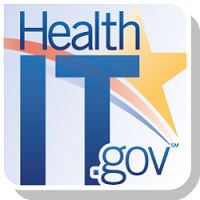 By Andrew Gettinger, M.D./ Acting Deputy National Coordinator for Health IT ,
By Andrew Gettinger, M.D./ Acting Deputy National Coordinator for Health IT ,
Thomas A. Mason, M.D./ Acting Director, Office of Clinical Quality and Safety , and
Rebecca Freeman, PhD, RN, PMP/ Chief Nursing Officer
Twitter:@ONC_HealthIT
Every day, clinicians work tirelessly to provide the best possible care for their patients. Clinicians and other health care providers like hospitals are increasingly using health information technology (health IT) such as electronic health records (EHRs), and a growing body of evidence shows health IT can help them make care safer. However, new technology can pose challenges and risks. At the Office of the National Coordinator for Health Information Technology (ONC), patient safety is a top priority, and that’s why we maintain the SAFER Guides to help with the implementation decisions clinicians make to reduce EHR associated patient harm. (SAFER is the acronym for Safety Assurance Factors for Electronic Health Record Resilience.)
The inherent safety of a health IT system depends on the interactive work of software developers, EHR implementers, and clinical users of EHRs. All of these stakeholders have a shared responsibility to make, maintain, and use the system safely. Yet, we often hear that the health IT in use today often falls short of users’ expectations. EHR usability—the ease with which an EHR can be employed to help deliver care—and the safety of a system is heavily influenced by two key design decision processes: (1) the developers’ decisions about the functionalities or capabilities in the software created by the developer, and (2) those decisions made by the installing facility or practice when the EHR is implemented and customized. (ONC issues guidance on functionalities and capabilities through the ONC Health IT Certification Program.)
Updated SAFER Guides
The SAFER Guides, initially published in January 2014 have been downloaded by approximately 52,000 users to date. The guides provide an easy-to-use template for voluntary provider self-assessment of EHR safety related vulnerabilities. The Guides are compilations of evidence-based, expert-recommended practices for a key focus area, in a checklist-based format. Each Guide includes recommendations, checklists, and note templates that can be used by teams to thoroughly assess the safety and usability of EHRs while lessening data-related burdens.
Because there has been a rapid evolution of health IT since the original Guides’ release, ONC updated the Guides, and included feedback from health care providers and EHR developers based on best practices and experiences. Taking into account comments and recommendations from the Electronic Health Record Association, the National Quality Forum, the National Academy of Medicine, and the American Medical Informatics Association, among others, key updates to the Guides include:
- A new recommendation to the Test Results and Follow-up Reporting Guide to improve communication of abnormal results to patients which is based on recommendations from the National Academy of Medicine.
- An update to the Contingency Planning Guide reflecting best practices for prevention and mitigation of ransomware attacks as well as new recommendations about “downtimes,” those times when systems are partially (response times are unacceptably slow) or completely unavailable. These both represent multiple safety issues.
Impact and Future Use of SAFER Guides
There are encouraging examples of EHR developers using the SAFER Guides recommendations to help their customers set up and safely use health IT. In some cases, developers have used the Guides to create manuals that help their customers configure and implement their system for improved usability and safety. And some health care organizations have shared feedback on their experiences using the original Guides.
We anticipate the updated offerings will be useful resources for technical assistance providers, such as those focused on helping clinicians in small practices improve their care quality and outcomes and successfully participate in Medicare’s Quality Payment Program.
We look forward to continued engagement across a wide array of stakeholders focused on improving health IT operational usability and safety. We have seen impressive growth in the safe use of health IT, but know that it takes work to keep them, and ourselves, up to date as the health IT industry evolves. We encourage you to explore the updated SAFER Guides, the Health IT Playbook, and other resources available on HealthIT.gov to improve the safety and safe use of your EHR.
This post was originally published on the Health IT Buzz and is syndicated here with permission.
